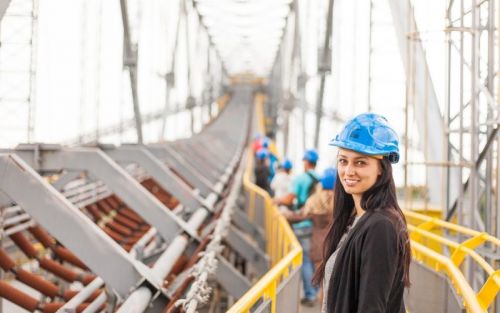
As leaders in the construction industry, you navigate through projects, and we’re here to discuss how embracing technology can make these endeavors safer and more aligned with OSHA regulations.
We’ll explore practical ways to integrate tech solutions and software that keep your team secure and ensure your business follows the necessary rules.
Construction safety is one factor to consider when considering your construction business’s success. What about data insights to make more sound financial decisions?
In this domain, enterprise software becomes a change-maker for construction businesses.
Join us in this discussion on incorporating technology for a safer and more compliant future in construction.
The role of technology in improving safety and compliance in construction is multifaceted, ushering in a new era of efficiency, risk mitigation, and regulatory adherence.
Here are key facets where technology plays a pivotal role:
Smart Wearables: Wearable technology, such as smart helmets and vests, equipped with sensors and communication devices, allows for real-time monitoring of workers’ health and location. This ensures immediate response in case of emergencies and helps prevent potential hazards.
Drones and Cameras: Drones and strategically placed cameras provide comprehensive surveillance of construction sites. This not only aids in monitoring progress but also helps identify safety and health hazards. Advanced analytics can analyze this data, offering insights for proactive safety measures.
Cloud-Based Platforms: Technology enables the digitization of documentation and compliance records. Cloud-based platforms streamline the storage and retrieval of essential documents, ensuring that necessary permits, safety manuals, and certifications are readily accessible and up-to-date.
VR Training Modules: Virtual reality offers a safe environment for workers to undergo construction safety training simulations. This immersive experience allows them to familiarize themselves with potential job site risks and proper occupational safety procedures, enhancing preparedness.
Environmental Monitoring: IoT sensors can track ecological conditions, such as air quality and noise levels, providing construction companies insights into potential health risks for construction workers. This data aids in implementing preventive measures to maintain a safe working environment.
Safety-Enhanced Personal Protective Equipment: Automated machinery and robotics are designed with workplace safety features, reducing the likelihood of accidents. This includes sensors that can detect the presence of workers in close proximity, prompting the machinery to slow down or stop.
Mobile Apps and Communication Tools: Instant communication through mobile apps and dedicated tools facilitates quick response to construction site safety concerns. Workers can report incidents, and supervisors can disseminate critical information, fostering a collaborative safety culture.
Data-driven Insights: Technology leverages predictive analytics to identify potential safety risks based on historical data. This proactive approach enables construction managers to implement targeted interventions, minimizing the likelihood of accidents.
Technology serves as a catalyst for a safer and more compliant construction environment by providing real-time insights, automating processes, and empowering workers and managers with the tools needed to navigate the complexities of safety and regulatory compliance effectively.
These tech tools and software solutions collectively empower construction businesses to manage and proactively enhance safety measures and ensure regulatory compliance.
Leveraging these tools can contribute to streamlined operations, reduced risks, and improved overall project outcomes.
Implementing tools and software in your construction business involves a thoughtful and phased approach to ensure a smooth transition and optimal utilization.
Here’s a step-by-step guide:
Evaluate your existing workflow and processes. Identify your pain points, areas for improvement, and specific needs that the tools and software can address. This assessment forms the basis for selecting the right solutions.
Clearly outline the objectives you want to achieve by incorporating tools and software. Whether it’s improving project management, enhancing safety protocols, or streamlining communication, having defined goals will guide your implementation strategy.
Based on your needs and goals, research and select the most suitable tools and software for your construction business. Consider compatibility, ease of use, scalability, and integration capabilities. Ensure that the chosen tools align with your budget.
Before implementing the tools across the entire organization, conduct a pilot test with a more minor team or on a specific project. This lets you identify any potential challenges, gather feedback, and make necessary adjustments.
Provide comprehensive training for your team on using the new tools and software. This includes hands-on sessions, user guides, and access to support resources. Make sure that everyone is comfortable with the technology before full-scale implementation.
Develop clear standard operating procedures that incorporate the use of the new tools. Outline how these tools integrate into daily tasks, communication channels, and reporting processes. This ensures uniformity in usage across the organization.
Roll out the tools in phases rather than attempting a full-scale implementation at once. This decreases disruptions and allows you to address any issues as they arise. Start with a specific department or project, then gradually expand to other areas.
Continuously monitor the effectiveness of the tools. Encourage feedback from the team and be open to making adjustments based on their experiences. Regularly evaluate how well the tools align with your initial objectives.
Anticipate and address any challenges or concerns during the implementation process. This could include resistance to change, technical issues, or unforeseen obstacles. Be proactive in finding solutions to keep the transition smooth.
Acknowledge and celebrate milestones and successes achieved using the new tools. Recognize your team’s efforts and reinforce the technology’s positive impact on the efficiency and outcomes of construction projects.
Foster a culture of continuous improvement by regularly assessing the performance of the tools and seeking opportunities for enhancement. Stay informed about updates and new features offered by the software providers to maximize benefits.
Emphasize the importance of collaboration and communication facilitated by the tools. Encourage team members to use the technology for transparent communication, sharing updates, and collaborating on project tasks.
Following these steps, you can systematically integrate tools and software into your construction business, ensuring a successful transition that enhances efficiency, safety, and overall project management.
In embracing technology, your construction business embarks on a transformative journey toward heightened efficiency, enhanced safety, and streamlined operations.
Amidst these advancements, MobiClocks®️ emerges as a crucial tool, uniquely designed to cater to the construction industry’s dynamic needs.
Its True Face Recognition technology ensures accurate and hassle-free time and attendance tracking, significantly reducing manual inputs and errors.
This feature streamlines workforce management and contributes to a safer work environment.
By accurately knowing who is on-site, MobiClocks®️ aids in emergency situations, ensuring all personnel are accounted for.
Furthermore, its ease of use and seamless integration into existing systems make MobiClocks®️ an invaluable asset for any construction business looking to leverage technology for better compliance and safety measures.

There are a lot of ways to deal with no call, no show employees. The policies you enforce will depend on the type of manager you are.

Naturally, productivity and work ethics are positively and strongly correlated. There are many ways to set up a work environment where ethics are valued, and one of the most effective ways has proven to be guidance and empowerment. If you are ready to tak

Having an employee handbook is essential to the efficient operations of your business. In general, it contains all the procedures and policies that go on in your firm. It’s vital to have one, especially in construction companies, where logistics plays a h